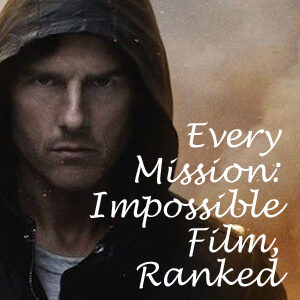“The Shadow” (1994) is one of those pre-Superman non-comic superheroes. Created by Walter B. Gibson, The Shadow originated in a pulp novel in 1930. He fights crime in New York City and has the supernatural ability to cloud people’s minds; when he attacks, his enemies see a shadow at most, and possibly nothing at all, as if he’s invisible.
Stuck in prototype stage
The 1994 film about this proto-superhero seems stuck in the prototype stage. It’s written by “Jurassic Park’s” David Koepp and directed by Russell Mulcahy (most recently a regular helmer on “Teen Wolf”) and is set in the 1920s. The idea of a noir superhero is juicy, but like “The Spirit” (2008), this attempt falls flat.
The production design and clothing say “1920s” but not much else about the film evokes that period. “The Shadow” is shot like an epic, but it has a lot of one-liners and whimsical moments. Few of them land on their own, but the loose editing really hurts “The Shadow,” as it can’t even muster a theme-park ride type of momentum. It’s somehow both too serious and not serious enough.

“The Shadow” (1994)
Director: Russell Mulcahy
Writers: Walter B. Gibson, David Koepp
Stars: Alec Baldwin, John Lone, Penelope Ann Miller
Alec Baldwin plays Lamont Cranston (from whom the band took its name), a.k.a. The Shadow. And also a.k.a. Tulku … I think. The precise nature and identity of The Shadow is confusing — not in a fascinating way, but in an unclear writing way.
Cranston starts the story as the evil ruler of a kingdom in China, but then a mystical man named Tulku (Brady Tsurutani) gives Cranston the Shadow superpowers and sends him to NYC to do good deeds and redeem himself. Cranston doesn’t want to, but he’s forced to.
I thought this might turn into an exploration of how a psychopath with no empathy learns through repetition how to be a good person. That’s not the case, and for a while it seems like Tulku has outright possessed Cranston … but that doesn’t seem quite right either.
Actors better than the material
Penelope Ann Miller is rather fetching as the gold-haired Margo, who can read people’s minds and is also immune to Lamont’s mind-clouding power. “The Shadow” includes some other actors you’ve heard of – Peter Boyle, Ian McKellen, Tim Curry, Jonathan Winters – and I feel bad for all of them.
Some of them are bad on their own – including a lifeless pre-“X-Men” McKellen as a possessed scientist – but by and large the problems are the thankless editing, lagging pace and confused tone.
“The Shadow” has some value to special effects historians, although the effects knock a viewer out of the 1920s vibe. The pre-digital (or early digital) work, such as a dagger that comes to life and bites an unworthy wielder, is good for the 1990s.

The team also portrays the Shadow in different ways. In addition to Baldwin performing the character straight up, sometimes he’s a shadow or a wavy ghost. While the work is good in the abstract, none of it is interesting to watch, nor is there any narrative logic to it. Sometimes the Shadow is an audio effect for most of the fight: He hides and laughs, thus scaring his enemy and annoying the viewer.
There’s a deliciously stylized superhero noir to be made out of “The Shadow” someday. The 1994 effort isn’t it. Even the Shadow knows.

